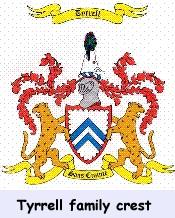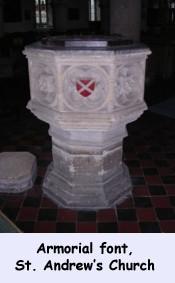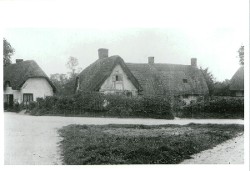 |
|
|
|
|
|
|
|
|
|
|
West
Hagbourne Village History Group
Windsor Hakeborne: the Story of West Hagbourne |
|
Windsor Hakeborne:
the Story of West Hagbourne was published by the West Hagbourne
History Group to coincide with the millennium year 2000. The publication
followed nine years of meticulous research in libraries, archives,
museums and record offices. Many West Hagbourne families shared
their memories and donated family photographs. It has been favourably
reviewed in the journal Oxfordshire Local History. Click here to read the review. Click here to read the evidence. The name Hagbourne has evolved over many centuries and its origins are traced in the introduction to Windsor Hakeborne. Click here to discover how West Hagbourne got its name. The story of West Hagbourne opens with the discovery of both Bronze and Iron Age artefacts close to the Icknield Way, an ancient trading route which crosses Hagbourne Hill. These artefacts became known as The Hagbourne Hoard and are now held by the British Museum. We are introduced to Walter, the lord of West Hagbourne at the time of the Domesday Book in 1086. He was made first constable of Windsor Castle by William the Conqueror and took the name de Windsor. He founded the Windsor dynasty which held the manorial estates of West Hagbourne for nearly 600 years. During the medieval period West Hagbourne became known as Windsor Hakeborne, hence the title of the book.  Click here to see West Hagbourne's entry in the Domesday Book Following a vivid description of the Windsor manor at the time of Clarice de Windsor, lady of the manor in 1367, the story moves on to provide glimpses of village life between the 16th and 18th centuries. West Hagbourne's own Protestation Return of 1642; the proceedings of its manorial courts, including a curious link to Judge Jeffreys and the wills and inventories made by the new land-owning classes, all help to build up a picture of life in West Hagbourne during these centuries. Whole chapters are devoted to both the village Inclosure Award of 1843 which fundamentally changed the old feudal system of farming and to the Hagbourne Charities, one of which, the William Tyrrell Charity, is still functioning to this day.  The
church of St Andrew is the parish church of West and East Hagbourne.
However, West Hagbourne once had its own chapel, dating back to
at least 1133 when it was mentioned in a royal charter. The book
documents West Hagbourne's close links with St Andrew's, including
the rebuilding of the south aisle and chapel in the 15th century
by John York and his wife Clarice, widow of Richard de Windsor of
West Hagbourne. They were also responsible for the font which bears
their family shields. They are both buried in the south aisle. The
church of St Andrew is the parish church of West and East Hagbourne.
However, West Hagbourne once had its own chapel, dating back to
at least 1133 when it was mentioned in a royal charter. The book
documents West Hagbourne's close links with St Andrew's, including
the rebuilding of the south aisle and chapel in the 15th century
by John York and his wife Clarice, widow of Richard de Windsor of
West Hagbourne. They were also responsible for the font which bears
their family shields. They are both buried in the south aisle. The next part of the story is told through the eyes of the census taker of 1851, Francis Shepherd. His route through the village is reconstructed from the original census records. At this time the village boasted a bakery, malt house, two public houses and several small shops. This chapter includes some wonderful old photographs of village houses and, in some cases, their inhabitants. The chapter concludes with a  vivid
eyewitness account of the sea voyage of two West Hagbourne families
who emigrated to New Zealand in 1874. vivid
eyewitness account of the sea voyage of two West Hagbourne families
who emigrated to New Zealand in 1874.The history of West Hagbourne would not be complete without a detailed account of its many farms. West Hagbourne has always been a farming community and several farms still exist, though none of them now produce the fruit for which the area was once famous. The oldest building in the village is the house at York Farm which dates from 1264. It is one of the earliest, complete timber-framed houses to survive in England. The final chapter of Windsor Hakeborne takes the story to the end of the 20th century. It is full of the reminiscences of some of those whose families have lived in West Hagbourne for generations, many told in their own words. Whilst some are tinged with sadness, such as the tale of the motherless little girl sent to live in the workhouse in Wallingford, others, particularly those centred on the Horse and Harrow public house, are hilarious. Windsor Hakeborne: the Story of West Hagbourne is published in hardback with a sumptuous cover and its 258 pages are illustrated with photographs, maps and drawings. Also included are a time chart and an index. A list of sources is included at the end of each chapter. Copies are no longer available but they occasionally turn up on eBay. A copy is also available for consultation in Didcot library. |